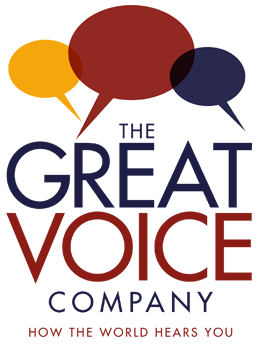I’ve been in the business long enough to remember recording on reel to reel tape.
In my voice over studio I had two huge Tascam reel to reel machines, lots of white wax pencils, sticky tape, razor blades and band aids. Fixing flubs was a real ordeal .
You’d listen on slow speed, mark the mistake with the wax pencil, slice it out, and stick the whole thing back together again.
Removing breaths required surgical precision and not infrequently, you’d slice off the beginning of a word (and hopefully not a piece of your finger) and have to record the whole thing all over again.
The editing we do today in minutes took hours.
Voice over beginners mistakenly believe they have to read the script perfectly from beginning to end, but this is never the case.
Today’s audio software easily and quickly removes the slightest imperfection, making multiple takes sound like a single, cohesive read.
In today’s Inside Voice Over, I’ve got 5 practical tips to help you deal with the inevitable flubs in any voice over performance.
Watch this week’s short training video Here Now
After you watch the video be sure to leave a comment. I always love to hear from you so I can support you as you grow your voice over career.
To your voice over success,
Susan Berkley,
Founder, The Great Voice Company
PS
Launch your new voice over career in 2019! Get ready with our Voice Over Accelerator Bootcamp Dec. 1-3 at the Great Voice Studios. Only 10 available seats and they’re going fast! Questions? 800-333-8108, talent@greatvoice.com or

Thanks so much for provide no these weekly videos. I find them helpful, informative and encouraging! I’m looking forward to attending one of your boot camp sessions in person sometime in the future.
Jennifer Garson
Susan, I like the suggestion to CLAP this will help me a lot.
Never apologize great TIP I’m just getting started and have not had and audition yet and I know that I would have made this mistake. So thanks for the uptick.
Listening to the play and making sure I did not add or delete words that the customer wants will make my takes much better.
Thanks again this is going to really help me.
What does that mean “Picking up and punching it” when listening back to your audio on a rollback edit? I hope you will expand on that in the future because I have no idea what that is. As a side note, this is another great video training vlog Susan. Thank you for continuing to do these for us. 🙂
Hi Lindsay
Rolling edits are often used in audiobooks. That’s when you listen back to what you recorded and start recording again right before you make the mistake— the advantage being that you don’t have to physically edit out the mistake, you just record right over it. The technique is you speak over your own voice before you made the mistake and then when you get to the mistake just keep going, punching in, or pushing record at that point. Hope that makes sense. This is easier to do in the directed session when someone else is doing the recording. It’s a little tricky when you’re editing yourself.
Hi! Susan. Thank you so much for your informative sessions with lots of encouraging ideas and tips for improving our voice over career. Your voice comes over clear and crisp and I am interested to know what equipment you are using as I have a home studio set up and looking to buy. Best.
Hi Arlen
I’m using an Akg 414 to record these blogs but you can get great results at home with a much less expensive USB mic such as the blue yeti or the apogee. Good luck!